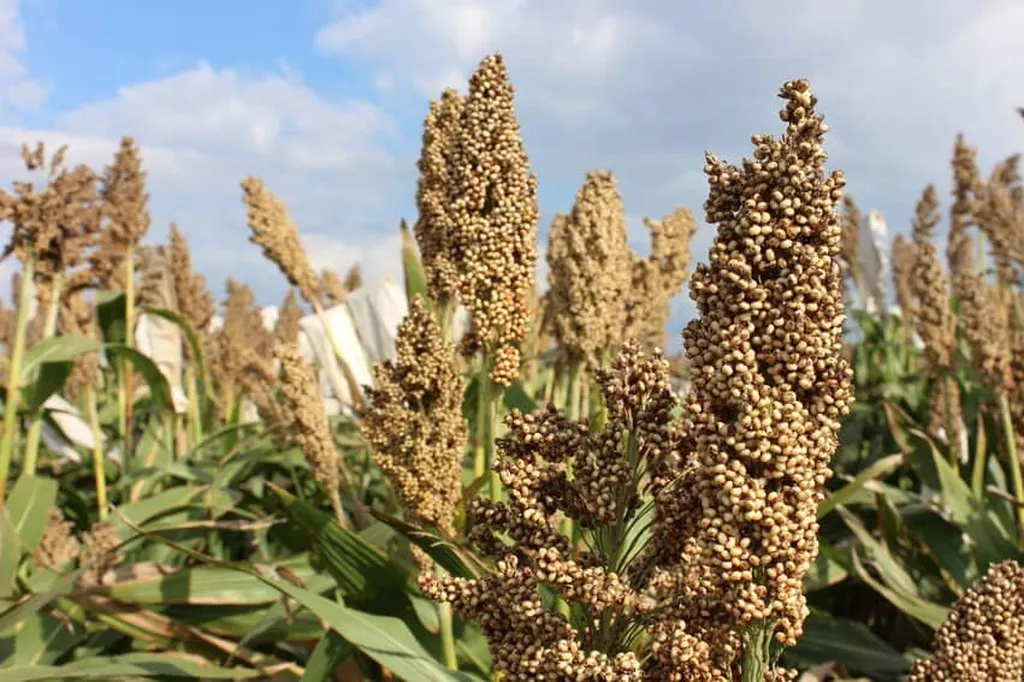In the heart of Tamil Nadu, researchers have unlocked a treasure trove of genetic diversity in sorghum, a crop that has long been a staple in arid and semi-arid regions across the globe. The study, led by Sweta Sinha from the Department of Plant Molecular Biology and Biotechnology at Tamil Nadu Agricultural University, Coimbatore, leverages RAPD (Random Amplified Polymorphic DNA) analysis to shed light on the genetic tapestry of sorghum accessions. Published in the ‘International Journal of Bio-Resource and Stress Management’, this research could have significant implications for the agriculture sector, particularly in the realm of crop breeding and genetic resource management.
Sorghum, known for its resilience and versatility, is a crop of immense importance, particularly in regions prone to environmental stress. The genetic diversity within sorghum accessions is a critical resource for breeders aiming to develop new varieties that can withstand the challenges posed by climate change and other environmental factors. “Understanding the genetic diversity within sorghum accessions is crucial for the continued progress in breeding programs,” Sinha explains. “This diversity provides the raw material for developing new varieties that can meet future environmental challenges.”
The study analyzed forty sorghum accessions using RAPD markers, generating a total of 107 polymorphic loci with a polymorphism rate of 65.35%. The number of markers per primer ranged from 6 to 12, with a Polymorphism Information Content (PIC) value ranging from 0.34 to 2.54. Jaccard’s similarity coefficient values ranged from 0.40 to 0.78, indicating a wide genetic diversity among the accessions. The cluster analysis resulted in five distinct clusters, revealing high homology between B-lines and R-lines. Notably, the clustering pattern indicated a significant genetic diversity between grain sorghum groups and forage sorghum groups, with moderate variation among sweet sorghum. The mutant lines showed more DNA polymorphism compared to the parents, suggesting a rich source of genetic variation for breeders to exploit.
The commercial impacts of this research are profound. By understanding the genetic diversity within sorghum accessions, breeders can develop new varieties that are not only more resilient to environmental stress but also tailored to specific agricultural needs. This could lead to increased crop yields, improved nutritional content, and enhanced resistance to pests and diseases. “The existence of wide genetic diversity among the sorghum accessions provides scope for the development of well-defined heterotic groups for this crop,” Sinha notes. “This could revolutionize the way we approach sorghum breeding and genetic resource management.”
The implications of this research extend beyond sorghum. The methods and insights gained from this study can be applied to other crops, paving the way for a more sustainable and resilient agricultural future. As the world grapples with the challenges of climate change and food security, understanding and harnessing genetic diversity becomes increasingly important. This study is a significant step in that direction, offering valuable insights and tools for breeders and researchers alike.
In the words of Sweta Sinha, “This research is not just about sorghum; it’s about the future of agriculture. By understanding and utilizing genetic diversity, we can develop crops that are better equipped to meet the challenges of tomorrow.” As we look to the future, the insights gained from this study will undoubtedly play a crucial role in shaping the development of new and improved crop varieties, ensuring food security and sustainability for generations to come.

